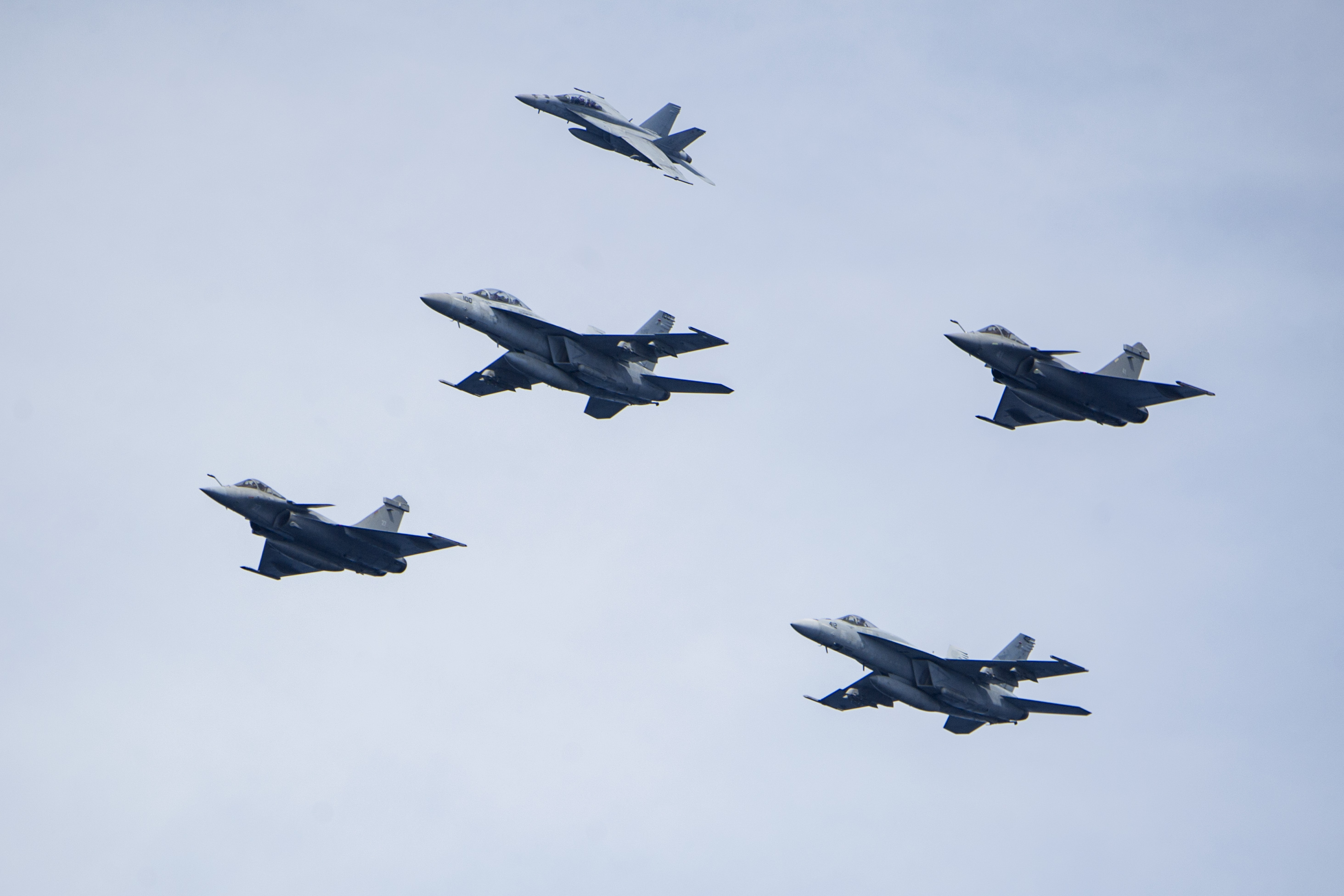
A French Dassault Rafale M Fighter touches down on the flight deck aboard the Nimitz-class aircraft USS Harry S. Truman (CVN-75) on July 3, 2018. US Navy photo.
Naval aviators from the U.S. and France are training together for the second time this year, anticipating the French navy’s resumption of carrier operations this fall.
As part of French Air Defense week, French Dassault Rafale M Fighters are participating in exercises with F/A-18E/F Super Hornets and E-2D Hawkeyes from Carrier Air Wing One (CVW-1) embarked aboard USS Harry S. Truman (CVN-75).
“France is our oldest ally and a vital partner in ensuring security and stability in the region and across the globe,” Rear Adm. Gene Black, the commander of Carrier Strike Group 8, said in a statement. “The opportunity to integrate with French Naval Aviation helps us enhance our interoperability as we work to achieve common objectives.”

F/A-18 Super Hornets, assigned to Carrier Air Wing One, and French Dassault Rafale M Fighters fly over the Nimitz class aircraft carrier USS Harry S. Truman (CVN 75). Harry S. Truman is deployed as part of an ongoing rotation of U.S. forces supporting maritime security operations in international waters around the globe. US Navy photo.
The U.S. and French have both participated in the international effort to degrade the military capabilities of ISIS. French aircraft carrier FS Charles de Gaulle (R91) had provided integral support to operations in the Mediterranean against ISIS forces, even serving as the command element for U.S. Naval Forces Central Command’s Task Force 50 during a gap in U.S. carrier operations in the region from Dec. 7, 2015 to March 3, 2016. However, the sole French carrier had to undergo an 18-month maintenance period, leaving French naval aviators without a ship to train on.
Earlier this year, during April and May, about 350 French aircraft maintainers, flight deck crew members and Rafale M fighter and Northrop Grumman E-2C Hawkeye pilots trained at Naval Air Station Oceana and spent about 10 days aboard USS George. H.W. Bush (CVN-77) off the East Coast in the Atlantic. The French crew was able to conduct carrier qualifications on the U.S. carrier, ahead of Charles de Gaulle resuming combat operations this fall.
The current exercises between the Truman Strike Group and French aviators are occurring over France, over French territorial waters and in international waters in the Bay of Biscay. They are scheduled to finish Friday.
“When we operate together we’re stronger than just the sum of our parts, and this training continues our investment in that cooperation,” Black said in the news release.
Until a week ago, the Truman Strike Group had been operating in the Mediterranean. However, in line with the Pentagon’s goal to be more strategically unpredictable, the Truman Strike Group and components of the Iwo Jima Amphibious Ready Group have spent more time in the U.S. 6th Fleet area of operations working with European partners and less time in U.S. 5th Fleet and focused on Middle East operations compared to other recent East Coast CSG and ARG deployments.
